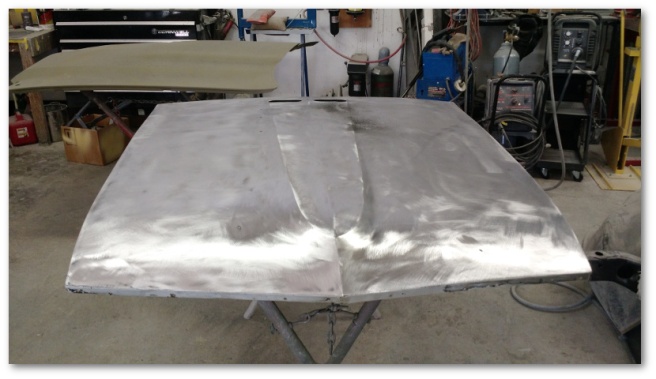There’s a famous phrase that states “good things come to those that wait.” This week’s project with the Mustang ended up as the living personification of that statement.
If you recall from last week, I discovered that my driver’s side quarter glass was rather scratched up and nasty looking:

Since a new piece of glass runs over a hundred and fifty dollars, I decided to see how well polishing the scratches out of the glass would work.
My research led me to a polishing compound called Cerium Dioxide (or CeO₂). Cerium dioxide is more commonly known as simply Cerium Oxide and provides two different polishing actions when used on glass.
According to http://chemicalrawmaterials.blogspot.com/2013/04/how-does-cerium-oxide-polishing-powder.html
Cerium oxide polishing glass is a chemical-mechanical process. Cerium oxide polishing powder has two effects in the polishing process, namely mechanical action, and colloid chemistry, these two effects occur simultaneously. The initial stage of the polishing is the process for CeO2 to remove surface irregularities layer, and thus showing a new polished surface, the mechanical action is a major at this time. Meanwhile, since there is water in the polishing mixture, H3O ions are formed in the polishing process, H3O ion and Na ion mutually exchange in the glass surface and form hydrolysis compound with the glass; Furthermore, since CeO2 polishing agent has a polyvalent nature, the oxidation-reduction reaction of Ce (3) / Ce (5) will destroy the silicate crystal lattice, and oxidized the contact material from the glass surface with polishing agent, and forming a complex to be removed by chemical adsorption (including glass and hydrolyzing compound).
Here’s a video on how the process works:
My glass polishing kit came with a small bag of Cerium Oxide powder and a 3 inch polishing disk:

I followed the instructions in the video and made a slurry with the powder that looked like puked up Pepto-Bismol. I then attached the polishing wheel to my drill and started polishing:

The video above doesn’t mention how long the process of polishing the glass takes. It’s likely that if they did, people like me would decide that $150 dollars for a new piece of glass isn’t such a bad idea after all.
The process takes forever.
I spent three hours yesterday polishing a one inch by twelve inch section of glass. I went through two batteries and what seemed like the entire collected works of Weird Al Yankovic before I was satisfied with the results.
But in the end I was very satisfied with the results:
Before:

After:

The stuff worked really really really slow, but it worked really well.
In the end, there were a few scratches that were too deep to fully polish out. I’m totally OK with that since you can only see them if the light hits them just right. Under normal circumstances they are totally invisible. It was actually rather hard to get a picture of the remaining scratches because the conditions to see them were so hard to create.
Three hours of polishing one tiny section of glass doesn’t leave much time for anything else to get done. This (along with putting all the glass away) was about all I finished this week. This week’s project will be finishing up the remaining window related items that are still in my rolling cart.
BONUS MATERIAL:
The body shop has started working on the Mustang more. Here’s what the hood currently looks like:


3 thoughts on “Quality Time With CeO₂…”